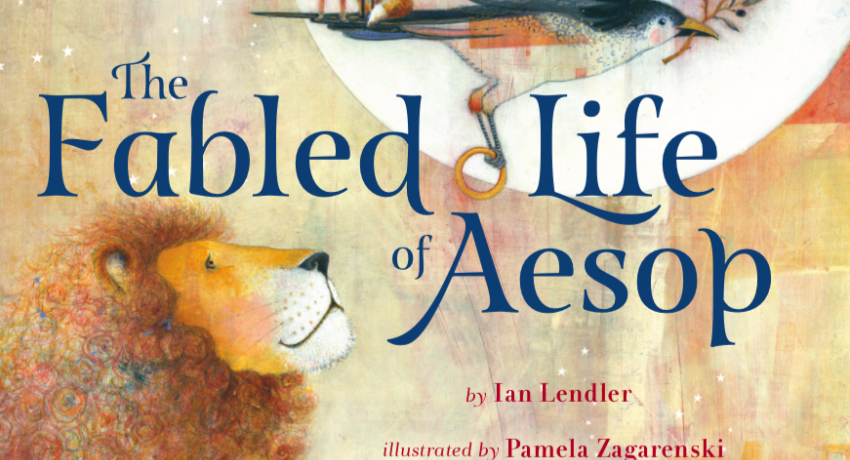From Kikus:
"Messages both overt and hidden in the life and preserved wisdom of an enslaved storyteller.
Yes, Lendler acknowledges, Aesop’s fables are generally interpreted as “simple lessons on virtue and good values,” but on closer looks, “many of them are actually practical advice on how to survive in a world in which some have power and some do not.” As evidence, he selects 13 to retell—most (“The Ant and the Grasshopper,” “The Boy Who Cried Wolf”) well known, others, such as “The Donkey and the Lapdog” and “The Lion and the Statue,” less so. Some are embedded in an imagined account of Aesop’s life based on legends from later centuries. In this narrative, the child of enslaved parents learns to speak “in code,” impresses one master but is sold to a second, and, after some years, wins freedom at last with the story of a wolf who would rather go hungry than be collared like a dog. Zagarenski places light-skinned, delicately expressive humans and graceful animals (the latter often in anthropomorphic dress and postures) into golden-toned settings. The book is highlighted by a lyrical trio of climactic freedom scenes in which morals, titles, and lines from fables become decorative elements, swirling exuberantly through dense crowds of figures. Morals printed in gold add further sumptuous notes to the tersely rendered fables.
Lovely art comes with unusual perspectives on familiar tales about lions, mice, and trickster foxes. (afterword, bibliography) (Folktales. 7-10)"
- Log in to post comments

